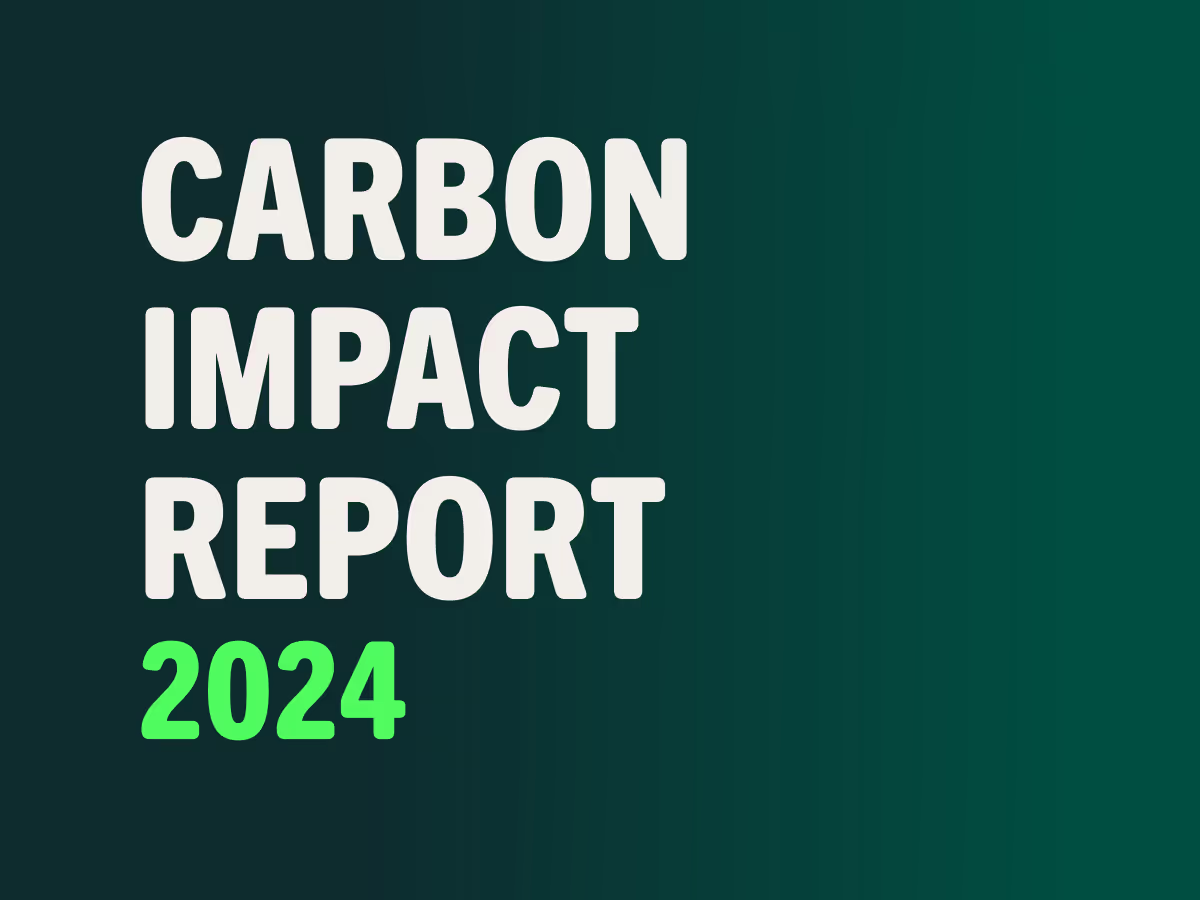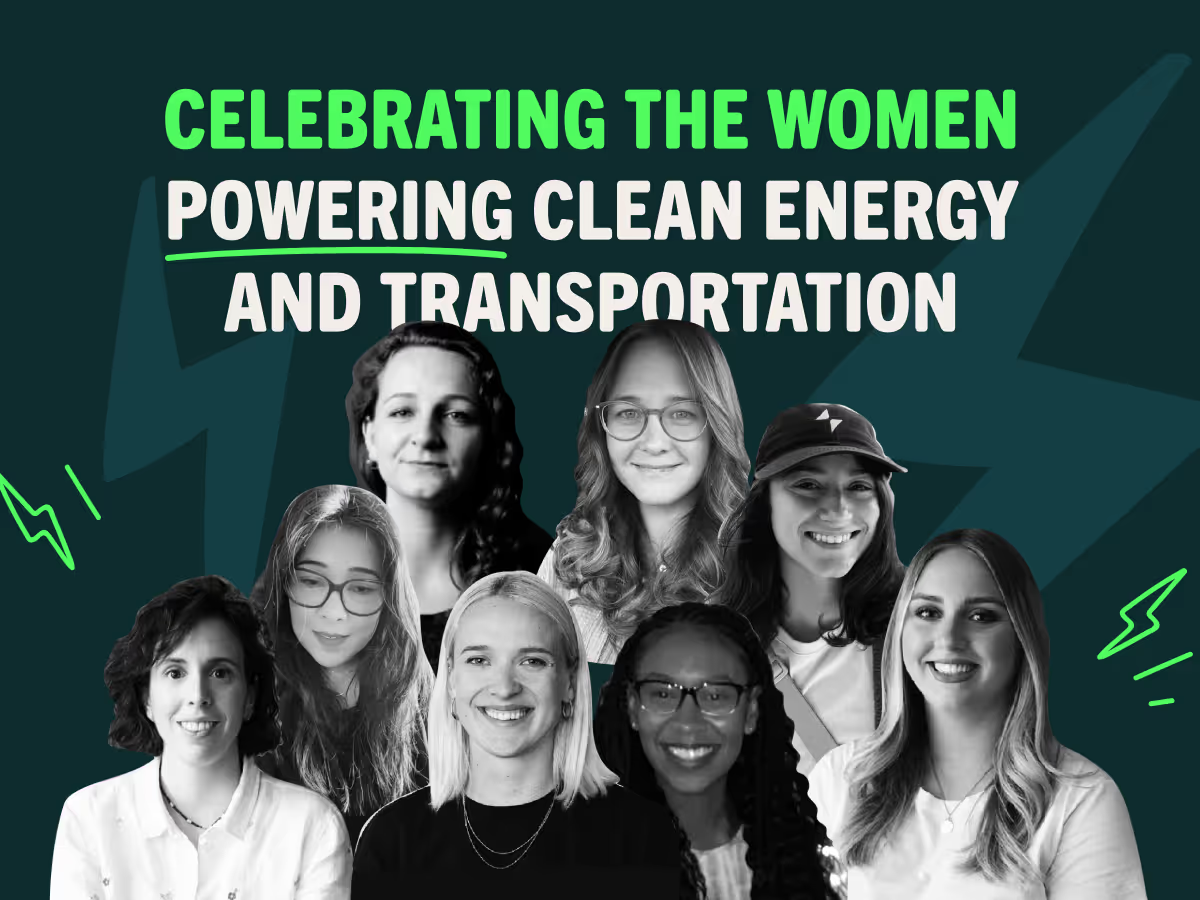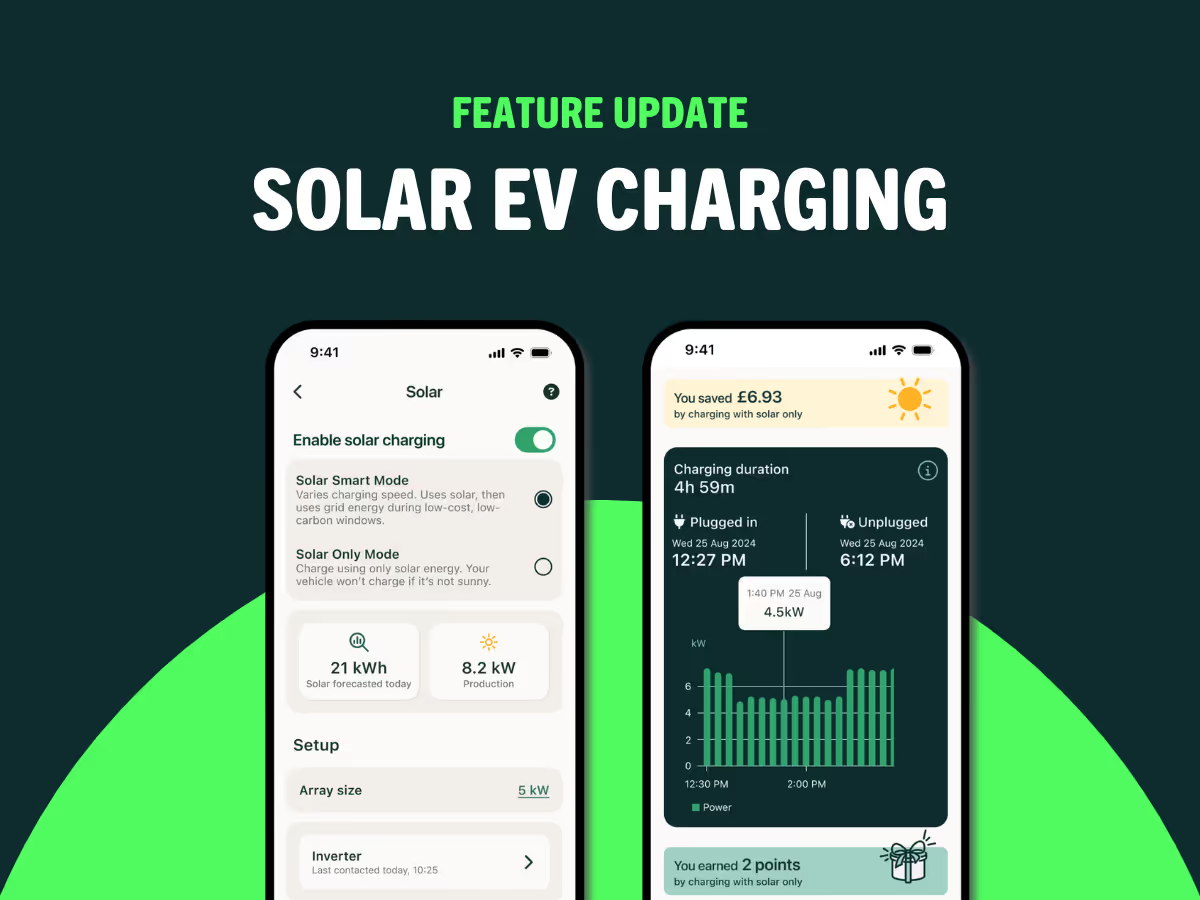ev.energy Carbon Impact Report 2021


At ev.energy, our mission is to connect everyone to greener, cheaper, and simpler electric vehicle charging. We fundamentally believe that getting smart with how we charge our EVs will create benefits for our customers, our business and the planet. Internally, we call this a “win-win-win”.
That’s why we’ve made it our responsibility to make a smarter, cleaner and fairer energy grid accessible to all EV drivers through our app, which integrates with electric vehicles and charging equipment.
To be certain that we’re on the right track, we regularly review our performance to ensure the standards we set as a business are met across all areas, including our environmental impact.
Today, we’re sharing the ev.energy Carbon Impact Report for 2021 to hold ourselves accountable in the public realm.
ev.energy is a proudly carbon-negative organisation
In 2021, we were carbon-negative.
We estimated that we saved at least 857 tonnes of carbon by working on our mission to deliver greener, cheaper and simpler charging.
Carbon savings generated through smart charging and supporting the transition to electric vehicles totalled an estimated 1243 tonnes. These more than offset the estimated 386 tonnes of carbon impact generated from running our platform and the individual carbon costs of every person working for ev.energy, giving a net saving estimated to be 857 tonnes in 2021.
We calculated our total carbon footprint across our employees and services. Then, we netted this off against the benefits we deliver – both from smart charging and also from accelerating the transition to electric vehicles.
To clearly demonstrate how we calculated our minimum 857 tonnes of savings we have broken our report down into 4 simple sections.
- The carbon impact of our team: 375 tonnes
- The carbon impact of the tools, products and services we use: 11 tonnes
- The carbon savings made through our smart charging product: savings of 263 tonnes
- The carbon savings we’ve been able to generate by driving EV adoption: savings of 980 tonnes
Team: Our combined personal carbon footprint in 2021 was 375 tonnes

We kicked off 2021 with a team of 15 and, after a period of significant growth, we grew to 42 people by the end of the year.
We shifted to fully remote working during the pandemic and we won’t be turning back. Our team is now spread around the world.
With no office or commuting impact, we wanted to use a methodology that was ambitious and suited to our way of working.
Therefore, we decided to include all of our employees’ emissions in our team impact. Only this way could we be sure of the impact we’re having on society.
We’ve measured the total personal carbon consumption of every employee – homes, transport, holidays – everything. We found that our overall footprint was 375 tonnes, which works out at an average of 8.9 tonnes per employee.
Tools: Our platform carbon footprint in 2021 was 11 tonnes

As a software company, we’re fortunate that we do not use many physical materials, or require products to be shipped across the globe. Nearly every tool we use to help us deliver our product to our users and partners is cloud-based.
The benefit of this is that generally, the carbon impact of a software business is much lower than physical product companies with lengthy supply chains. However, there is still a carbon cost associated with the services and so our methodology was to measure the impact of running our servers and all the services and tools that we use.
While this is an estimation, we endeavoured to make it as accurate as possible. We use Amazon Web Services (AWS) to host our service, as do many of the companies we work with. It seemed logical that if we could work out the carbon impact of hosting and calculate the CO2 emissions per British Pound, then we could assess the impact of all the cloud platforms we use.
We found the overall footprint of our hosting and tools was 11 tonnes.
Product: Smart charging helped to generate 263 tonnes of carbon savings in 2021

By making smart charging easy with the ev.energy app, we’re helping a rapidly growing number of users to lower their carbon impact by charging their EV when energy production is less carbon-intensive. Working with a number of partners across Europe, North America and beyond, we’re making this even more accessible.
We’re already measuring the impact that our smart charging app is providing. In fact, we live and breathe this metric internally, so our methodology here was simple.
To calculate the carbon savings, we looked at the CO2 emissions a charging session would have had if the user just charged as soon as they plugged in – which is usually at the peak time when energy production is the most carbon-intensive. We call this the “counter-factual”.
We then compare that with the CO2 emissions associated with the actual charging session, where we’ve optimised charging for the greenest possible periods. We then look at the difference in CO2 emissions between the two and this gave us our savings.
We found that smart charging with ev.energy saved 263 tonnes of carbon emissions.
EV Adoption: By accelerating the transition to electric vehicles, we saved 980 tonnes of carbon in 2021

Electric vehicles offer a huge and rapidly growing ecosystem, which we are proud to play our part in. While we are only a small part of this ecosystem, charging is critical to delivering truly zero-carbon mobility and we’re helping drivers and businesses access a greener charging experience.
To calculate our carbon contribution as a part of the whole ecosystem we measured the number of miles tracked across the ev.energy platform in 2021 and assigned our contribution to be 5%.
Then, we compared the emissions associated with the average petrol or diesel car over the same number of miles, minus some emissions for manufacturing and charging.
We found that our users driving electric vehicles instead of those with an internal combustion engine (ICE) avoided 980 tonnes in CO2 emissions.
We’re driving change for society and the planet
In total, the 386 tonnes of carbon impact from our team and tools was dwarfed by the 1243 tonnes of carbon savings delivered by our app, services and contribution to EV adoption. Our net impact was a saving of 857 tonnes.
It doesn’t stop there. In 2022, we’re already off to a fantastic start with a number of new people, projects and partnerships which allows us to drive our mission forward and make an even bigger positive impact.
We’re now in a phase of hyper-growth, with the stretching targets which will allow us to make EV smart charging accessible in new regions across Europe, North America and beyond.
Become a driver of change. Download the ev.energy app from the Apple App Store or Google Play store, or check out how ev.energy can help your business.
































































































